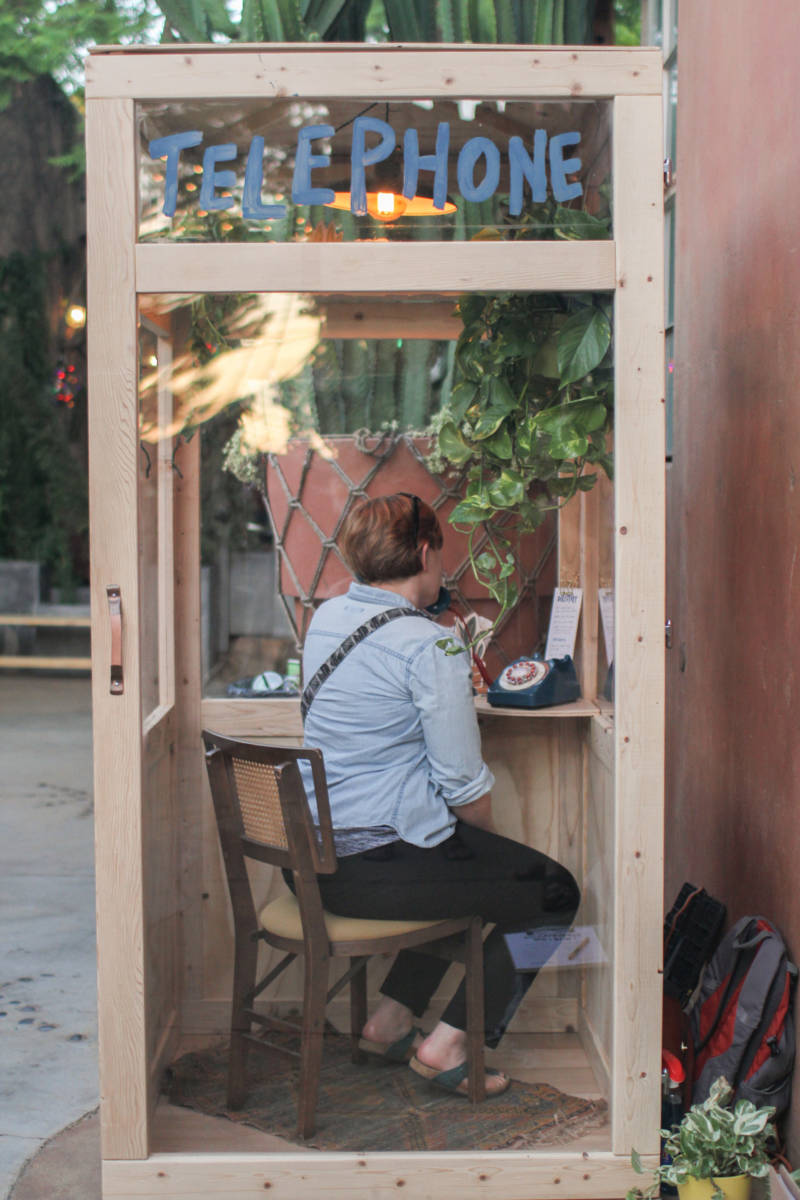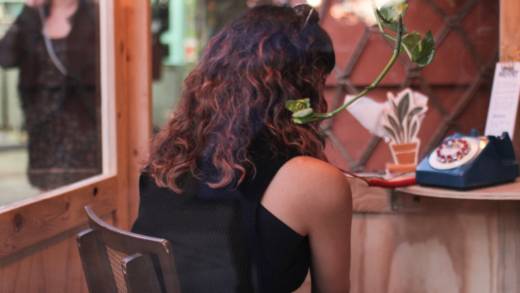If you could pick up the phone and call someone dead, who would you call? And what would you say? On Sunday, a pop up telephone booth in downtown Santa Cruz offers you the opportunity to answer those questions. The installation is called Conversations I Wish I Had.
Morgan Brown lost her mother in a car crash. In 2012, a big rig truck driver on meth swerved into oncoming traffic. It took Brown awhile before she felt comfortable being open about her grief. Now, she’s touring the country with her phone booth, to help others connect with their emotions over personal loss.
No, it’s not a real phone booth, and nobody talks back to you, but it does give you permission to open yourself up, in any way you see fit.
“I’ve had people talk to childhood pets. I’ve had people talk to people who are alive but they’re estranged from. I’ve had people talk to their former selves. You can interpret died or death in any way that you need to,” Brown says. After Santa Cruz, Brown will take the booth to San Francisco.
Many people will recall a phone booth famously set up in Ōtsuchi, Japan where families who lost loved ones in the 2011 earthquake and tsunami could imagine they were staying in touch with them. The story is beautifully told by producer Miki Meek on This American Life.

Brown insists she came up with her phone booth independently of the one in Japan. Whatever the case, the cathartic appeal of a chat with the dead is the same. Brown provides a “directory” to help get you started. “There’s a book of call prompts designed to carry you along in the conversation,” she says.


